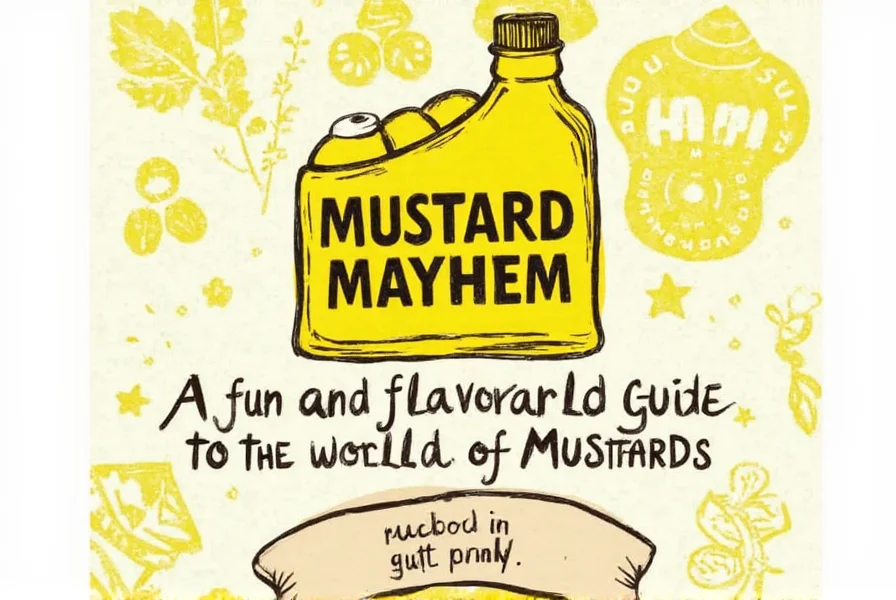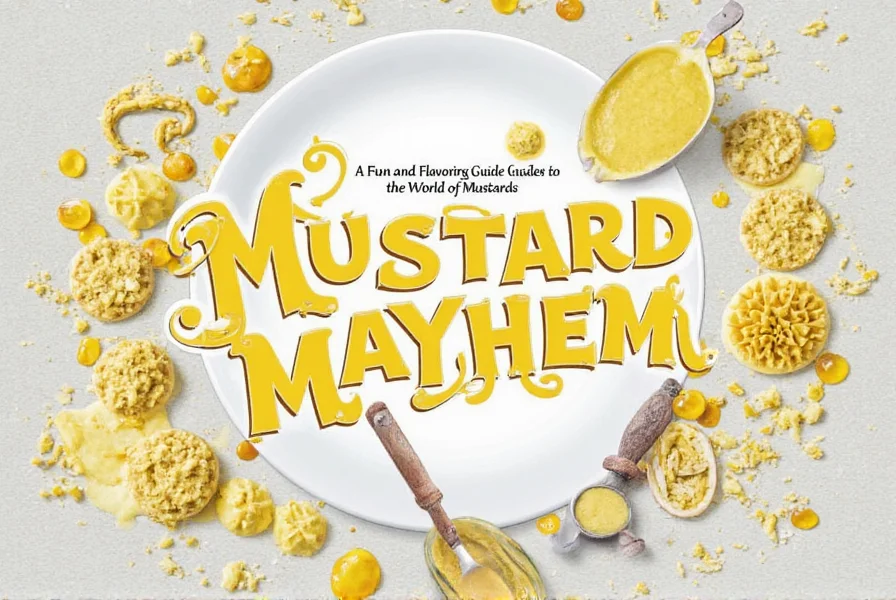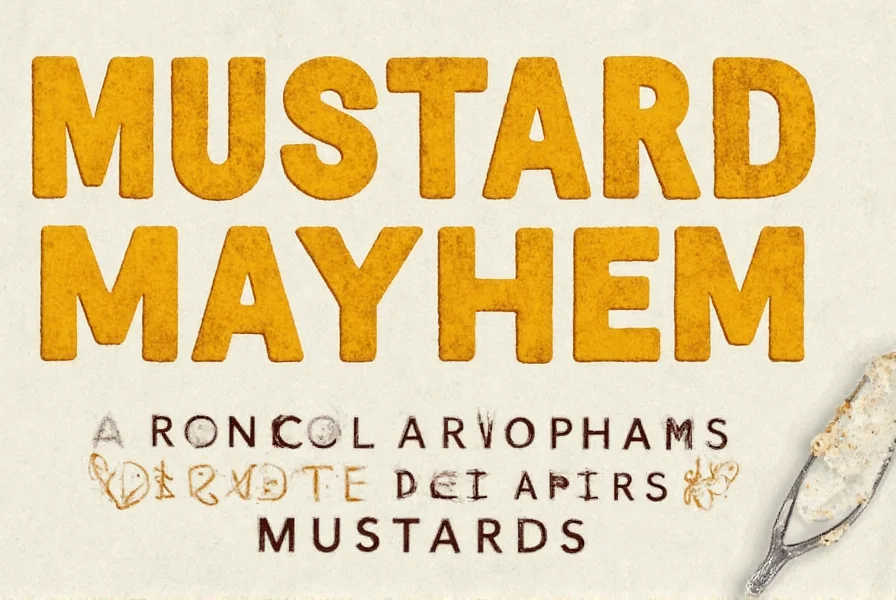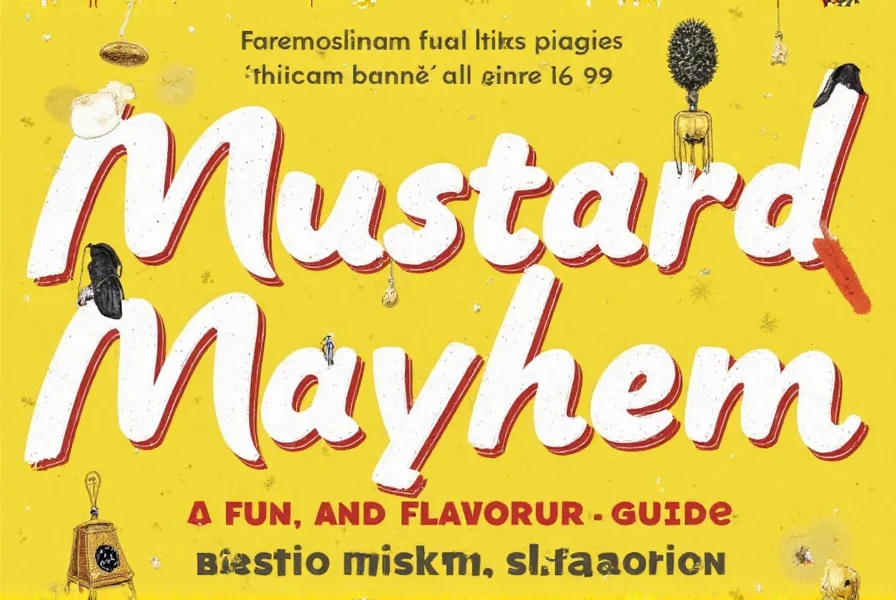Table of Contents
What Is Mustard and Why It Matters
Mustard is a versatile condiment made from mustard seeds, vinegar, water, and spices. It has been used for centuries across cultures for flavor, preservation, and even medicinal purposes. Whether you're making a sandwich, marinade, or salad dressing, choosing the right mustard can transform your dish. This guide covers the key types, uses, and buying tips to help you select the perfect mustard for any occasion.

Top 6 Mustard Types Explained
Understanding mustard types is essential for culinary success. Here are the most common varieties and their ideal uses:
| Type | Flavor Profile | Texture | Best Uses |
|---|---|---|---|
| Yellow Mustard | Mild, tangy, slightly sweet | Smooth | Hot dogs, burgers, sandwiches |
| Dijon Mustard | Spicy, complex, wine-based | Smooth | Vinaigrettes, sauces, gourmet dishes |
| Whole Grain Mustard | Bold, nutty, textured | Gritty | Charcuterie boards, marinades, cheese pairings |
| English Mustard | Intensely pungent, sharp | Smooth | Roast beef, sausages, British cuisine |
| Wasabi Mustard | Spicy, fresh, sinus-clearing | Smooth | Sushi, Asian dishes, fusion recipes |
| Honey Mustard | Sweet, creamy, balanced | Smooth | Dips, marinades, glazes |
Proven Ways to Use Mustard in Cooking
Mustard isn't just for sandwiches. Here's how to maximize its potential in everyday cooking:
- Salad dressings: Mix 1 tbsp Dijon mustard + 3 tbsp olive oil + 1 tbsp vinegar + herbs for a creamy vinaigrette.
- Marinades: Combine 2 tbsp whole grain mustard + 1 tbsp honey + soy sauce for chicken or pork.
- Grilled meats: Brush English mustard on sausages before grilling for authentic British flavor.
- Quick sauces: Stir 1 tsp wasabi mustard into mayo for spicy sushi dipping sauce.
- Cheese boards: Pair whole grain mustard with sharp cheddar or gouda for texture contrast.

How to Choose the Right Mustard
When shopping for mustard, consider these factors:
For Everyday Use (Yellow Mustard)
Look for: High vinegar content (preserves freshness), no artificial colors.
Best brands: French's, Gulden's.
Storage: Refrigerate after opening; lasts 1-2 years.

For Gourmet Cooking (Dijon Mustard)
Look for: Made with white wine, no added sugar.
Best brands: Maille, Grey Poupon.
Storage: Refrigerate; lasts 6-12 months.

For Cheese Boards (Whole Grain)
Look for: Visible seeds, minimal additives.
Best brands: Maille Dijon Originale, Grey Poupon Whole Grain.
Storage: Refrigerate; lasts 6-8 months.

Mustard FAQs: Quick Answers
What's the main difference between yellow mustard and Dijon mustard?
Yellow mustard uses white vinegar and turmeric for color, resulting in mild flavor. Dijon uses brown/black mustard seeds soaked in wine, creating spicier, more complex flavor with less acidity. Dijon is better for sauces; yellow is ideal for sandwiches.
Which mustard is the spiciest?
English mustard is the spiciest traditional variety, with intense heat that hits quickly. Wasabi mustard adds sinus-clearing heat from wasabi, but English mustard has stronger overall pungency. Heat level depends on seed type and preparation method.
How long does mustard last once opened?
Yellow mustard lasts 1-2 years refrigerated due to high vinegar content. Dijon and whole grain mustards last 6-12 months. Always check for mold, off smells, or separation before use.
Can I make my own mustard at home?
Yes! Mix 1/2 cup mustard seeds with 1/2 cup liquid (vinegar/wine), 1/4 tsp salt, and spices. Soak 24-48 hours, then blend. Homemade mustard develops flavor over 1 week. Control heat by using different seed types.
Final Tips for Mustard Success
Mustard is a culinary powerhouse that elevates simple dishes. Start with yellow for everyday use, experiment with Dijon for sauces, and try whole grain for cheese pairings. Always check expiration dates and store properly to maintain freshness. With the right mustard, you'll transform ordinary meals into extraordinary experiences.











 浙公网安备
33010002000092号
浙公网安备
33010002000092号 浙B2-20120091-4
浙B2-20120091-4